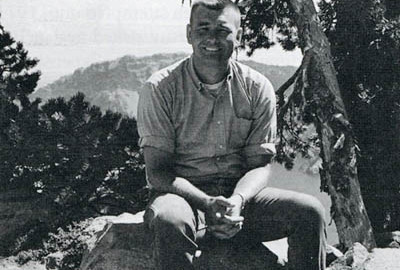Taxonomy?
Yes, taxonomic stuff. The thrust then was on eutrophic lakes because a lot of money was coming from EPA to look at lake eutrophication. I started out using Crater Lake as a baseline lake. It is probably an ultra oligotrophic lake, but it turned out to be far more productive than Waldo Lake. Waldo Lake became the baseline lake because it has almost zero production. Not zero, but certainly levels of production that were so low that there was nothing in the literature that could equal it. I finished that work, wrote my thesis, and graduated in June, 1970. After that I spent a year on a post doc at OSU. I graduated at an unfortunate time. After 1969 there were two things going on in jobs related to my field. It was an inverse relationship. Job opportunities were going down, down, down, quite rapidly because of the Vietnam War and the lack of funding (6). Yet there was an exponential increase in the number of people being produced because the universities geared up to produce graduate students. All major universities, particularly the ones like OSU, had gotten a lot of money to do research related to the environment. They had greatly expanded their departments and graduate schools and they were producing many, many more people than were really needed, so we ended up with a surplus of graduates competing for fewer and fewer jobs. Unfortunately I fell into the category where there just weren’t any jobs. Donaldson was able to get me some grant money and I more or less finished up his project. I won’t say he lost interest in the thing, but he was overwhelmed with other issues. I thought the least we can do is show some accountability here, so I spent the summer and early fall of 1970 putting together a report on the lakes of Oregon. It consisted of 150-page report, which named all the lakes, and it categorized them by physiographic regions. I had coastal lakes, Cascade lakes, ones in the Blue Mountains of northeast Oregon, and so forth.
Did you visit all of them?
Oh, no. What I did was I went to the Oregon Department of Transportation in Salem. They had township maps, big ones. I searched all those maps for lakes, every one. I recorded every lake that was plotted. If it wasn’t named, I called it an unnamed lake. I ended up with about 1,600 lakes that were listed in my report.
Out of the total of 6,000?
There are supposedly 6,000, but only less than a quarter of those are named or are large enough to be lakes in any real sense.


